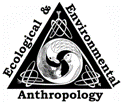Wildlife Damage Management, Internet Center for

Ecological and Environmental Anthropology (University of Georgia)
Date of this Version
November 2006
Abstract
The relationship between humans and non-human primates in South Africa is problematic. On the one hand, vervet monkeys were formerly designated vermin species and could be destroyed at will. On the other hand, many people keep young vervets as pets even though this is illegal, and the animals are confiscated if discovered. Sanctuaries were established to accommodate large numbers of orphaned and confiscated animals. Owners of some of these sanctuaries attempt to establish normal troop structures in the hopes of releasing these animals back into the wild and relieving overcrowding. However, local farmers, fearing crop damage, resist this release. Nature conservation authorities also resist release fearing possible disruption of natural patterns of genetic variability even though there is no consensus on the number of subspecies or evolutionary significant units among South African vervets. We have designed a sampling strategy to aid in resolving some of the taxonomic issues preventing release. Data from microsatellite loci suggest no genetic structuring linked to geographic distribution. Coefficients of population differentiation (AMOVA) show that 96.72% of variation within South Africa occurs within populations. Addition of a reference group from Kenya in East Africa still yielded a within population value of 90.20%, suggesting limited differences between populations. This information can contribute to informed management decisions, since there is no evidence from the populations sampled to date to support the hypothesis of genetic structuring within the overall South African vervet monkey population. There is therefore no genetic support for the current restrictions on the mixing of animals at sanctuaries or releases into the wild.

